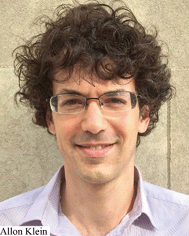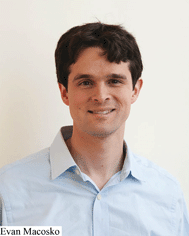InDrops and Drop-seq technologies for single-cell sequencing
Allon M.
Klein
*a and
Evan
Macosko
*b
aDepartment of Systems Biology, Harvard Medical School, Boston, MA 02115, USA. E-mail: Allon_Klein@hms.harvard.edu
bStanley Center for Psychiatric Research, Broad Institute of Harvard and MIT, Cambridge, MA 02142, USA. E-mail: emacosko@broadinstitute.org
Indexing cells in droplets: what's next?
Single cell analysis never requires analyzing a single cell. Biological insights are encoded in the differences between cells, so many cells need to be analyzed in each sample. The questions are manifold: which genes and pathways define cell states? How do cell states change in disease? And in response to perturbation? And between individuals? These questions touch upon almost every aspect of biomedical research. But answering these questions requires analyzing thousands of cells per sample, and doing so not just once, but in multiple samples and conditions.
Until two years ago, multi-sample, multi-single-cell experiments were unthinkable even for well-funded labs. The publication of two functional, low-cost droplet-microfluidic methods for single cell RNA Sequencing, inDrops and Drop-seq, fundamentally changed the scale of questions that could be addressed with single cell biology. Within months, researchers with little interest in microfluidic technology found themselves benefiting from remarkable innovations that developed in this field over the past two decades.
One of these methods, inDrops (“indexing droplets”) (Klein et al., Cell, 2015, 161, 1187; Zilionis et al., Nat. Protoc., 2017, 12, 44), lyses single cells and then “barcodes” their mRNA in nanoliter-scale aqueous droplets. To barcode cells, inDrops uses a pool of deformable hydrogel beads, each carrying barcoded DNA oligonucleotide molecules that label the resulting cDNA in each droplet. These soft gel beads are closely packed within the inDrops device and are released synchronously, so that each droplet receives a single barcoding hydrogel, using a method previously invented by Abate and Weitz (Abate et al., Lab Chip, 2009, 9, 2628). Using this principle, a single inDrops channel can barcode 15![[thin space (1/6-em)]](https://www.rsc.org/images/entities/char_2009.gif) 000 cells per hour of operation, with over 80% of cells captured and barcoded. A key insight in getting inDrops to work was that, although gels could be used to deliver DNA barcodes, the barcodes had to then be released into solution once inside the droplets. inDrops is currently the workhorse for a single cell core at Harvard Medical School, with over 1.5 million cells barcoded so far from this core alone.
000 cells per hour of operation, with over 80% of cells captured and barcoded. A key insight in getting inDrops to work was that, although gels could be used to deliver DNA barcodes, the barcodes had to then be released into solution once inside the droplets. inDrops is currently the workhorse for a single cell core at Harvard Medical School, with over 1.5 million cells barcoded so far from this core alone.
As a member of the team to develop inDrops, I am excited to see how lab-on-a-chip technologies will next impact single-cell biology. Some of the many challenges that remain are in preparing samples for single-cell analysis; in reducing the scale of these barcoding systems to study micro-organisms or even sub-cellular structures such as exosomes; in multiplexing single-cell RNA-Seq with epigenetic and proteomic information; in pre-sorting samples; and in improving molecular capture efficiency. Overcoming these challenges may require more than microfluidic knowhow. inDrops required not only microfluidics expertise, but also the ability to troubleshoot and innovate molecular biology and chemistry, and novel computational analysis of sequencing data to disclose problems occurring at the resolution of individually barcoded DNA molecules. I expect that new challenges will continue to be solved by strong interactions between microfluidic experts, biochemists, molecular biologists and bioinformaticians, and by individuals willing to break the boundaries between these disciplines.
Drop-seq for single-cell profiling
Progress in biology often arises when high-quality measurements can be made easily and robustly. Gene expression has become a dominant form of molecular phenotyping, both because of its close connection to cellular function, and because of the relative ease of amplifying and detecting specific nucleic acid sequences. Although gene expression is primarily interpretable at the level of individual cells (rather than in an aggregate population), there historically have been few ways to analyze expression at this scale. These “single-cell” experiments, while often immensely illuminating, were costly, time-consuming, and hence difficult to apply to the large array of biological problems that needed them.
I trained as a graduate student in C. elegans genetics, a field that is sometimes affectionately referred to as a “garage science” because of its admirably low technical and financial barriers to entry. As a new graduate student, I could easily and cheaply test dozens of hypotheses in a matter of a few weeks. This capacity for free and creative expression of scientific ideas has been a key ingredient in many of the seminal discoveries made in model organism biology.
In the development of Drop-seq, our team was deeply invested in the idea of making single-cell gene expression profiling a ubiquitous, straightforward, and low-cost enterprise that could be applied to fields in every corner of biology. Our technology was made possible through three major innovations. First, we benefited from the astounding recent progress in droplet microfluidics. Spearheaded by David Weitz's lab, microfluidic devices were made to co-encapsulate multiple analytes into droplets, across a wide range of droplet sizes, and in emulsions that were both stable and biologically compatible (Guo et al., Lab Chip, 2012, 12, 2146). The result was an impressively flexible high-throughput platform for processing cell suspensions. What was needed was a means of barcoding the cellular RNA contents for highly parallel sequencing. Our second innovation solved this problem, through the use of split-and-pool oligonucleotide synthesis on beads. Using this approach, we were able to generate a high-quality barcoding reagent that could capture and barcode a useful fraction of the RNA within each cell. Finally, with these key elements in place, we had to develop a scheme for molecularly capturing the RNA onto the bead surface. We noticed that reverse transcription was strongly inhibited when cells were encapsulated in the small volumes of typical microfluidic droplets (<1 nL), an observation reported by others as well (White et al., Proc. Natl. Acad. Sci. U. S. A., 2011, 108, 13999). By choosing to perform only hybridization on the bead—followed by wash steps and reverse transcription in a single bulk reaction—we were able to overcome this problem. In sum, we arrived at a single-cell profiling technology with extremely low cost (∼6 cents per cell) and high throughput (tens of thousands of cells per day), whose reagents were available from vendors, providing a clear path to adoption by non-expert labs.
Since the initial publication, Drop-seq has been applied to a wide range of biological tissues and problems. We have been using the technology to generate a broad, comprehensive survey of cell types in the mouse brain (not yet published). In addition, the technology's core technical elements have been adapted to accommodate fixed cells (Alles et al., Cell fixation and preservation for droplet-based single-cell transcriptomics, bioRxiv, 2017), nuclei (enabling access to archival tissues; Habib et al., DroNc-Seq: Deciphering cell types in human archived brain tissues by massively-parallel single nucleus RNA-seq, bioRxiv, 2017), and to combine protein and gene expression measurements in high throughput (Stoeckius et al., Large-scale simultaneous measurement of epitopes and transcriptomes in single cells, bioRxiv, 2017). By making Drop-seq technology open source and its components readily available, we hope the research community will continue to build upon our efforts to make new kinds of molecular measurements and ultimately, important biological discoveries.
| This journal is © The Royal Society of Chemistry 2017 |


